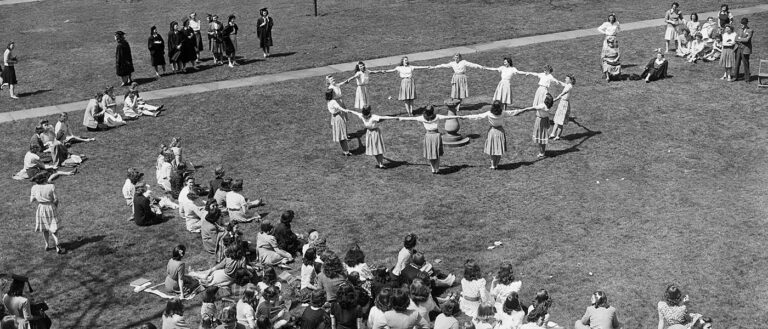The Daily has partnered with University Archives to shed light on Case Western Reserve University’s history each month. Follow The Daily to get your fill, and check out Digital Case to find even more information.
Throughout Case Western Reserve University’s history, many traditions and activities have been held to mark the end of the academic year. A long-running, popular campus tradition was May Day, then sponsored by the sophomore class at the College for Women (later renamed after benefactor Flora Stone Mather).
Around the turn of the 20th century, Adelbert College and the College for Women held class day plays (known as May Day plays). After the performances were complete, the senior classes from each college played a variety of games—a ritual that later turned into May Day, a designated day of activities, games and plays that celebrated the arrival of spring and the end of another academic year.
From 1912 to 1963, each year’s event had a theme (such as The Wizard of Oz or Snow White and the Seven Dwarfs) selected and executed by May Day committees—typically composed of class presidents, event chairs and other members of the campus community.
Event festivities included student-run plays and social outings, such as crowning an annual May Queen, dancing around the maypole, planting trees on Tree Day and participating in athletic activities—including the Hudson Relays, student-faculty softball games, tug of war, and canoe tilts.
Eventually, the event’s popularity grew so much that it expanded to May Day Weekend. And in May of 1965, the administration canceled all classes that Friday for students to attend festivities, as well as the 55th annual Hudson Relays, honor chapels and the crowning of the May Day Queen.
Today, some aspects of May Day, continue through events held the last weekend of spring semester classes, such as Springfest and Hudson Relays, which occurred late last month at Case Western Reserve.


